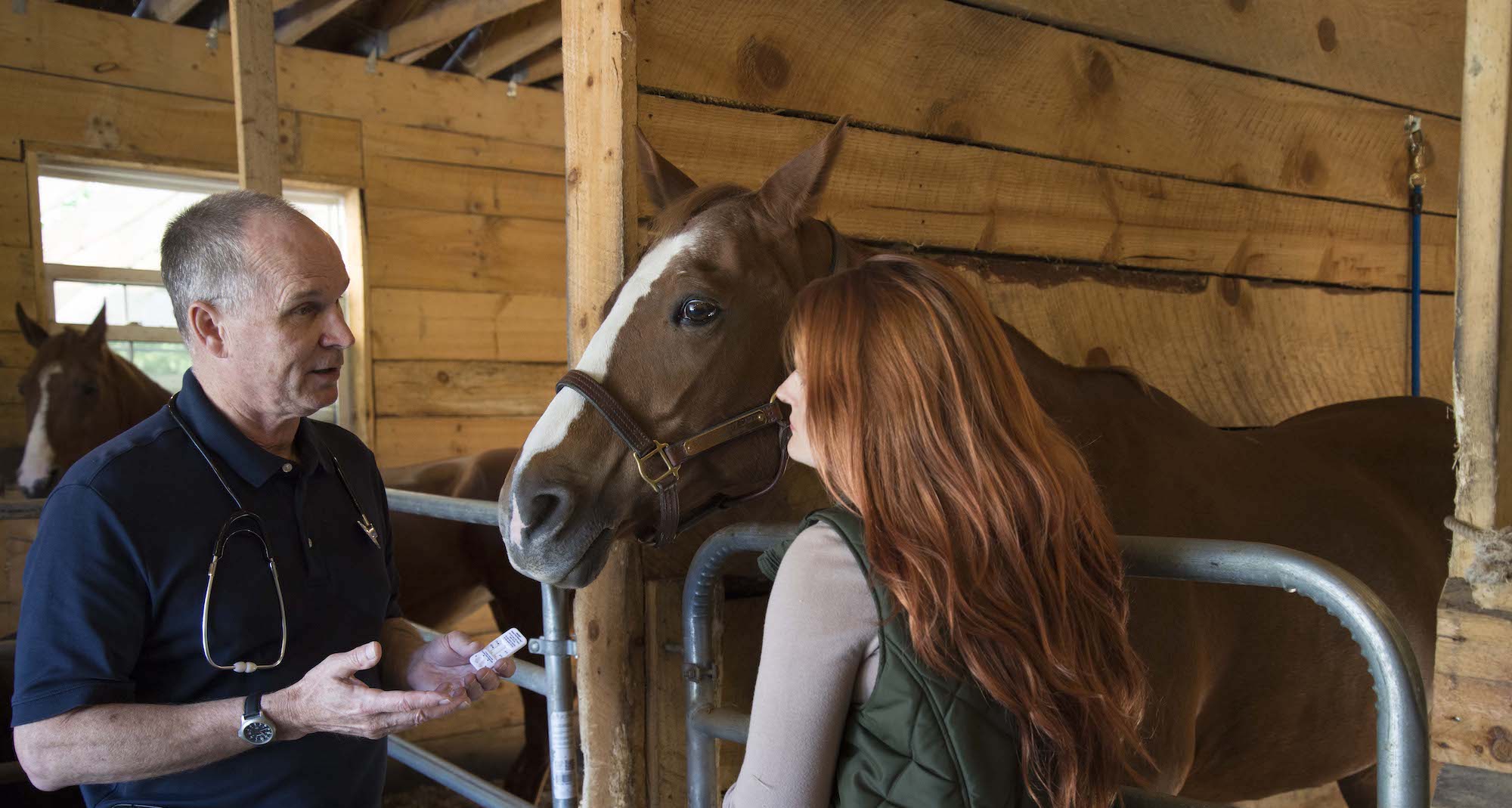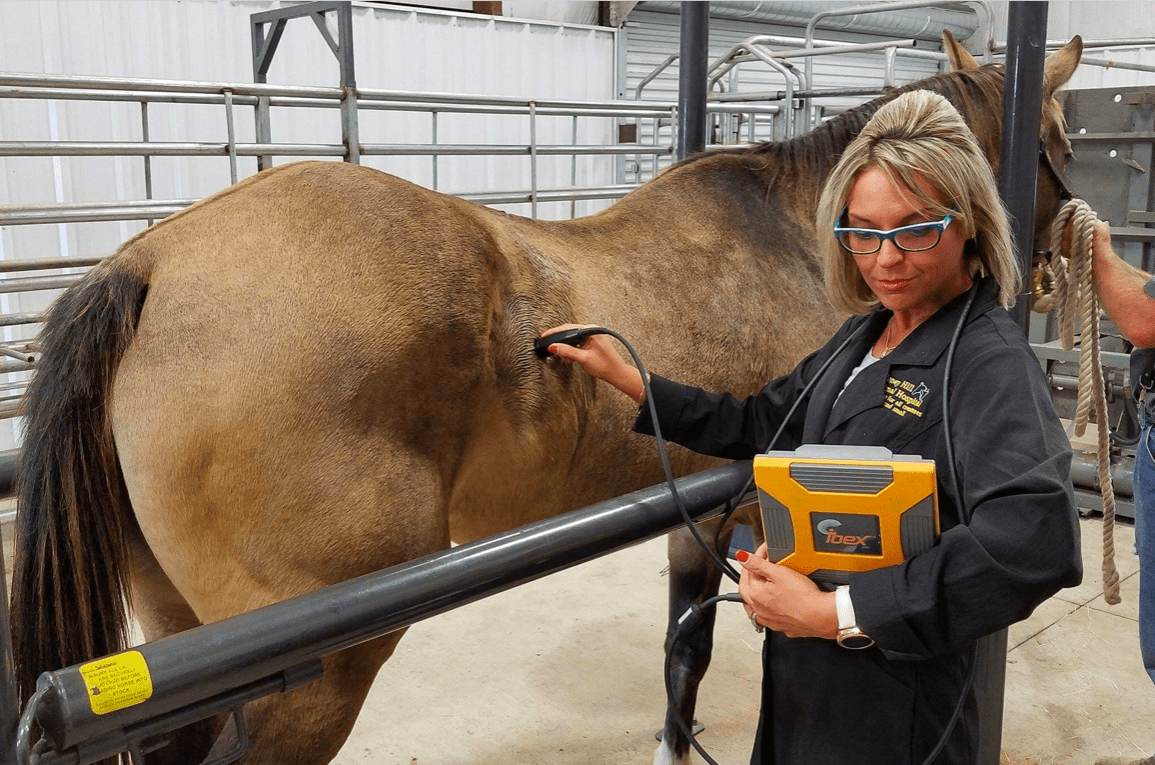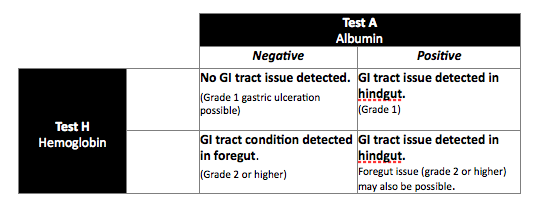Here at Freedom Health, we’re committed to excellence across the board, and that includes everything from our facilities, to each mouthful of hay that we give our horses.
When it comes to quality, we won’t stop until we get it right — and that’s particularly true of our work on the SUCCEED Equine Fecal Blood Test.
So when we started hearing feedback from veterinarians who were using the SUCCEED FBT out in the field, we listened. And we decided that we could make it even better.
We spent a year doing extensive research, modification and testing to the FBT, and in November 2011, it finally met our exacting standards. We began shipping the new and improved FBT in February 2012, and we feel confident that the new test kit is an even more powerful tool for providing a clearer picture of the horse’s digestive health — and the only field diagnostic tool available that can identify hindgut issues in horses, and differentiates between gastric and hindgut conditions. The simple test can be administered stall-side by veterinarians seeking information on suspected gastric or colonic ulcers, or used in conjunction with a CBC to identify additional conditions; results are available within 15 minutes.
Based on the feedback we received from veterinarians, we made several specific improvements to the test kit design. The improvements to the new SUCCEED Equine Fecal Blood Test are outlined below to ensure you obtain accurate, reliable results on every occasion.
How We’ve Improved On The Original SUCCEED Equine Fecal Blood Test
The Problem: Limited Range of Sensitivity
By its nature, an antibody test functions within a range of sensitivity to the antigen it is designed to detect. The FBT sensitivity was set such that the lower end of the range would be above normal baseline bleeding in healthy horses, to avoid false positives.
The Solution: By extending the upper limit of the test kit sensitivity from the prior level, we were able to increase the range of pathological conditions the test is able to detect in horses. As a result of this change, the accuracy of the current FBT is now at 94.9 percent for Albumin and 92.7 percent for Hemoglobin, compared with 87 percent and 83 percent for the prior version of the test kit.
The Problem: Overheated Test Kit
Purified antibodies, like those found in the SUCCEED FBT, are sensitive to long exposure to heat. Even on cool days, storing the FBT inside a car, UPS truck or warehouse could damage the test.
The Solution: New FBT labels and instructions indicate that the FBT should be kept refrigerated at all times. The kit is now being shipped in insulated cartons with cold packs. The compact size of the FBT test kit should enable most veterinarians to carry at least five kits in a standard truck fridge at any time, avoiding the damage caused by excessive heat.
The Problem: Moisture Contamination
In the past, we packaged the test cassette and its accessories in the clear plastic container designed to collect fecal matter. However, veterinarians in muggy or humid locations reported condensation collecting inside the bottle. Excess moisture upsets the efficacy of the test kit and provides inaccurate results or a malfunctioning test.
The Solution: Now, each cassette is packaged, together with the pipette and a desiccant pouch, in a sealed foil pack, ensuring a sterile environment for the cassette and protecting it from exposure to moisture prior to use.
The Problem: Silting The Well
As in previous versions, the FBT includes a disposable pipette used to extract the fecal solution for the test. We discovered that users of the FBT were often collecting solid particulate material (or silt) into the pipette while drawing the fecal/water solution from the jar. Drawing silt into the pipette is easy to do if the pipette bulb is depressed and released rapidly while collecting and applying the fecal/water solution.
When this silt is deposited onto the test well, it clogs the well, preventing the solution from wicking properly up the test membrane. When this occurred, veterinarians were often inclined to add an additional one or two drops of solution to the well to promote wicking. But, if the well is clogged, additional drops are of no use.
The Solution: We addressed this issue by including more explicit instructions about the importance of collecting liquid only, minimizing particles:
Use provided disposable pipette to collect solution from container. Collect liquid only, minimizing particles. For best results: (i) tip jar slightly, (ii) depress pipette bulb before placing in solution, (iii) insert tip of pipette below surface of solution and release bulb slowly to draw up solution.
Apply two drops of solution from pipette to each of the two sample wells by depressing pipette bulb slowly to produce large drops. The liquid should wick up the membrane in the test window to above the control line in 2-3 minutes. If it doesn’t wick properly, check that well is not clogged with silt, and apply one more drop to non-wicking well. Excess fluid can flood the test, negating the result.
Always read the directions thoroughly to ensure the test is properly administered and results are interpreted correctly.
For More Information
Read more about the extensive research and testing process conducted by our team of on-site veterinarians and scientists
We’re always happy to answer specific questions about the FBT, whether you’re a veterinarian or a horse owner, so feel free to contact Freedom Health here.
Veterinarians interested in trying the SUCCEED FBT in their practices can purchase it through major veterinary supply distributors.



